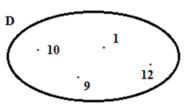Read the following passage and mark the letter A, B, C, or D on your answer sheet to indicate the correct answer to each of the questions.
Composers today use a wider variety of sounds than ever before, including many that were once considered undesirable noises. Composer Edgard Varese (1883-1965) called thus the "liberation of sound...the right to make music with any and all sounds." Electronic music, for example - made with the aid of computers, synthesizers, and electronic instruments - may include sounds that in the past would not have been considered musical.
Environmental sounds, such as thunder, and electronically generated hisses and blips can be recorded, manipulated, and then incorporated into a musical composition. But composers also draw novel sounds from voices and non-electronic instruments. Singers may be asked to scream, laugh, groan, sneeze, or to sing phonetic sounds rather than words. Wind and string players may lap or scrape their instruments A brass or woodwind player may hum while playing, to produce two pitches at once; a pianist may reach inside the piano to pluck a string and then run a metal blade along it. In the music of the Western world, the greatest expansion and experimentation have involved percussion instruments, which outnumber strings and winds in many recent compositions. Traditional percussion instruments are struck with new types of beaters; and instruments that used to be couriered unconventional in Western music - tom-toms, bongos, slapsticks, maracas - are widely used.
In the search for novel sounds, increased use has been made in Western music of Microtones. Non- Western music typically divides and intervals between two pitches more finely than Western music does, thereby producing a greater number of distinct tones or micro tones, within the same interval. Composers such as Krzysztof Penderecki create sound that borders on electronic noise through tone clusters - closely spaced tones played together and heard as a mass, block, or band of sound. The directional aspect of sound has taken on new importance as well Loudspeakers or groups of instruments may be placed at opposite ends of the stage, in the balcony, or at the back and sides of the auditorium. Because standard music notation makes no provision for many of these innovations, recent music scores may contain graph like diagrams, new note shapes and symbols, and novel ways of arranging notation on the page.
The word “it” in line 11 refers to __________.
A. piano
B. string
C. blade
D. music




